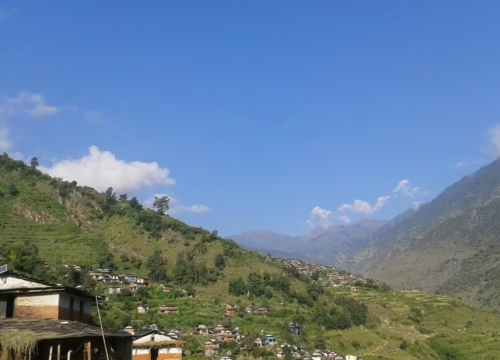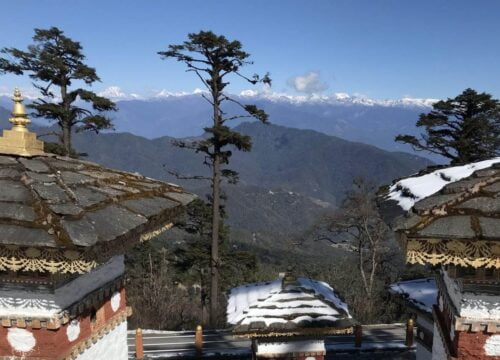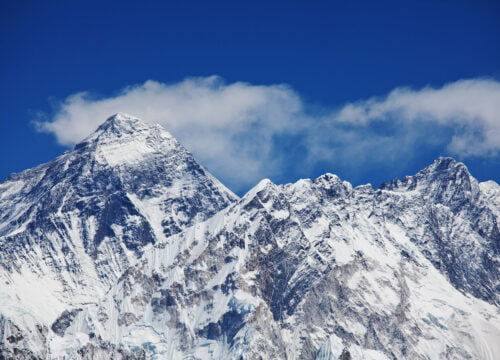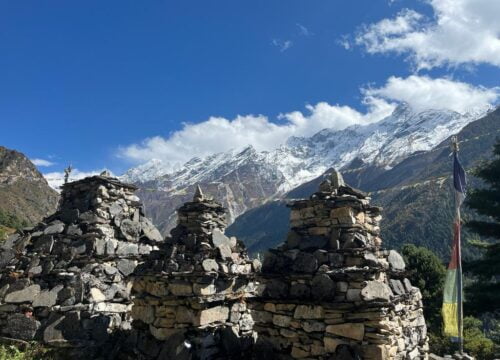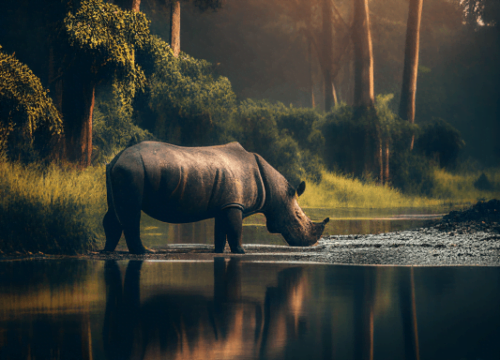Kathmandu City Tour (A)
Trip Overview
BoThe Kathmandu City tour, which is also known as the UNESCO World Heritage tour is one of the must-do tours when you visit Nepal. Kathmandu Valley is listed as a UNESCO World Heritage cultural city includes seven of the monuments that show the historical and artistic beauty that has made Kathmandu a must-visit destination in the world.
The seven monuments that the Kathmandu Valley includes consist of the three Durbar Squares of Kathmandu, Patan, and Bhaktapur, the Buddhist Stupa, and the Mahachaitya of Bouddhanath and Swayambhunath. It also includes two Hindu temple of Pashupatinath and Changu Narayan. This tour consists of three important places to visit in Kathmandu.
In this tour we have included one of the two important sites for the two biggest religions of Nepal and one site that shows the history and architecture of Nepal. The sites we will visit in this Kathmandu sightseeing tour are Bouddhanath, Pashupatinath, Patan Durbar Square and Swayambhunath.
Bouddhanath
This stupa is believed to be built on Kashyap Buddha relics. The stupa is also known as Chintaamani, the wish-fulfilling jewel. Bouddhanath is located approximately 7.5 km away from the east part of Kathmandu Durbar Square. It occupies an area of 7631.06 sq. mt. with a height of 43.03 meters. It has a dome that is 100 feet wide. Inside, there is a harmika made of copper. The harmika has blue eyes that connect the world in four directions.
As per the Buddhist philosophy, different parts of the stupa symbolize 5 elements, where the plinth symbolizes earth, the dome symbolizes water, the thirteen rings symbolize fire, the parasol symbolizes air, and the pinion symbolizes sky.
Different ethnic people called it by different names, where Newars called it Khasti Chaitya and Tamang community people called it Khasa Chitha, and since ancient times, Tibetan people have called it Jhyarung Khashyor.
Boudha Stupa has been enlisted in UNESCO as a World Heritage Site since 1979 AD. The Buddhists around the world see this as the rarest jewel. While taking Guru Padmasambhav’s Terma/Nidigrantha, the present-day figure of the stupa is said to have been made during the 16th century.
Pashupatinath
This temple is one of the most sacred in Hinduism. It is located on the bank of the Bagmati River. The main temple of Pasupatinath is dedicated to Lord Shiva. The main temple is located on the western bank of the Bagmati River.
This temple is also important for cremation, as it is believed that people who die in Pasupatinath are reborn on earth as humans. This temple has two ghats: Bhasmeshwor Ghat and Arya Ghat.
Bhasmeshwor Ghat: It is one of the best ghats to be cremated at as per the Puran, as when a body is cremated here, the smoke is blown away and gets to Shiva Linga, which makes them go to heaven directly. It is also known as the common people ghat in Nepali society.
Arya Ghat: It is one of the ghats of Pasupati near Bramhanal, where the dead body is purified with Bagmati water and wished a last goodbye. This ghat is mostly used for VIPs to cremate.
The monuments that are found in Pasupati are as old as the 2nd century, which is Narayan Murti ob Ghat. The temple of Pasupatinath is surrounded by 9 devis, like Jay Bagheshowri, Bhuwaneshowri, Batchaleshwori, Raj Rajeshwori, Guhyeshwari, Jhankeshwori, Man Manseshwori, Koteshwori, and Maha Gauri.
The main temple of Pashupati is built in a Nepali style with multiple roofs. The first floor has six gods on each side. These gods symbolize each yuga.
Uttar (North Side): It symbolizes Satya Yuga, which has Brahma, Vishnu, Shiva, Parvati, Ganesh and Kumar.
Dakshin (South Side): It symbolizes Dwapara Yuga, which has Yudhishthira, Bhima, Arjuna, Nakula, Sahadeva and Draupadi.
Pashim (West Side): It symbolizes Treta Yuga, which has Ram, Laxman, Sita, Bharat, Satrugan and Hanuman
Purba (East Side): It symbolizes Kali Yuga, which has Krishna, Balarama, Rukmani, Sateybhama, Bishwokarma , Mayo Danav.
Patan Durbar Square
Patan is known by different names, like Lalitpur and Yala. The name Patan means “flat land” or “best land” in Nepali. In this city people used to live from the Neolithic Age, as during excavation Lu Bu’s weapons were found. One of the oldest murti of the valley, Gajalaxmi, which is from the 1st century AD, can be found there. This city has preserved and promoted ancient metal craft techniques. It is rich in Dhatu Kala and also has one of the best museums in South Asia.
The structures we can see in Patan are mostly from the Siddhi Narasimha Malla period, which is around 1675. It is rich in terms of architecture. Patan is one of the best places to see palace buildings, artistic courtyards of Durbar, and beautiful Nepalese-style temples.
Krishna Temple: It is a shikhara-style temple, which is also called the 21-pinnacle temple, as it has 21 gajur in it. It was built by King Siddhi Narasimha Malla entirely with stone in 1637 and recently renovated in 2018.
Mahabouddha: It is located on the east side of Patan Durbar Square, which was constructed by Achey Raja Pandit in 1622. It is a beautiful example of terracotta art, which has 1000 Buddha statues of Sakhey Muni Buddha.
Hiranya Varna Mahabihar: It is also known as the Golden Temple, which dates from the 12th century. There is an image of Sakyamuni Buddha in the garba griha, or center of the temple. This mahabihar is used to provide education to the Buddhist student. It is also important and unique as it has a child priest for the temple.
Swayambhunath Mahachaitya
Swayambhunath is located northwest of Kathmandu Valley on top of the hill . It is also called as Monkey Temple as it is surrounded with thousand of monkey near them . It is one of the holiest Buddha Stupa in Nepal . The name Swayambhu means self evolved when valley was created from the lake .The legends says that it was born out from the lotus flower that was on the middle of the lake .
There is also Basubandu Chaitya which was build in remembrance of Basubandu on Bhuvan laxmi period . It also has a Chaitya Park which has lots of chaitya from 18th , 19th and 20th century .
The chaitya has 5 Dhyani budhha in it like Vairochana (Represent White color and always in Middle ) , Akshobya (Represents Blue and always in East side) , Ratnasambhava ( Represents Yellow and always in South) , Amitabha ( Represent Red color and always in West ) and Amoghsiddhi ( Represents Green color and always in North ) .
Why Kathmandu City Tour ?
Kathmandu City Tour package helps you to visit one of the important place to visit so you wont miss the beauty of Kathmandu Valley . It is also possible to do Kathmandu half day tour which includes less places and best for tourist who has less days in Kathmandu .
If you do sightseeing using it would be hassled and also Kathmandu sightseeing taxi fare would be expensive for you as we hired a driver and car for you which will help you make the trip more easier . The kathmandu city tour places can be different with what a different company offer and what tourist want to see but our itinerary is as per above .
This Kathmandu city tour cost you USD $ 120 which includes private transportation , Professional Guide , Lunch and Monuments Entrance Fees so you can enjoy your city tour without any hassles . If you have more question about Kathmandu city siteseeing please don’t hesitate to contact us through Whats App or you can also email us .
Trip Itinerary
Our guide will meet you in the hotel lobby and drive you to Boudhanath, the biggest Buddhist stupa in South Asia (the vehicle's capacity will depend on the number of people in the group). Since its construction in the sixth century by Shiva Dev, this massive stupa has been recognized as a holy site and a mound of exceptional beauty. We'll explore this stupa for about an hour.
We will travel from Boudhanath Stupa to Pashupatinath Temple, which is the most important place for Hindus, in about ten minutes. It is the shrine dedicated to Lord Shiva and his spouse, Parvati. The body is burnt on the banks of the famous Bagmati River. Because we Hindus believe that hell is below the earth and heaven is above the sky, when a body is cremated, the smoke is believed to travel to heaven, and the remaining ash is disposed of in the Bagmati River in Varanasi, India, which empties into the Ganges, which is also believed to have a connection to heaven.
Following lunch, we will travel from the Pashupatinath temple to the city of Patan. At lunchtime in Patan, we'll dine at a typical Newari restaurant. Most of the historical sites in Patan, such as the Krishna Temple, Taleju Temple, Mul Chowk, Sundari Chowk, Royal Spa, Bhimsen Temple, etc., were constructed under the Malla dynasty. But metal sculptures and handicrafts are another thing Patan is well known for.
We travel from Patan to the stupa of Swayambhunath, where you can see the Hindu Harati Mata Temple and the Buddhist stupas and shrines. The term "self-made" at the time of the incident is Shyambhu. You will primarily find Vajrayana and Mahayana Buddhism in Nepal and at this area; nevertheless, Theravada Buddhism is only found in one place in Nepal. We will be treated to breathtaking views over the Kathmandu Valley from both the east and the west and from the north to the south. After the tour, return to the hotel for a bit of relaxation, dinner, and a chance to look through the beautiful pictures you took that day.
FAQs


